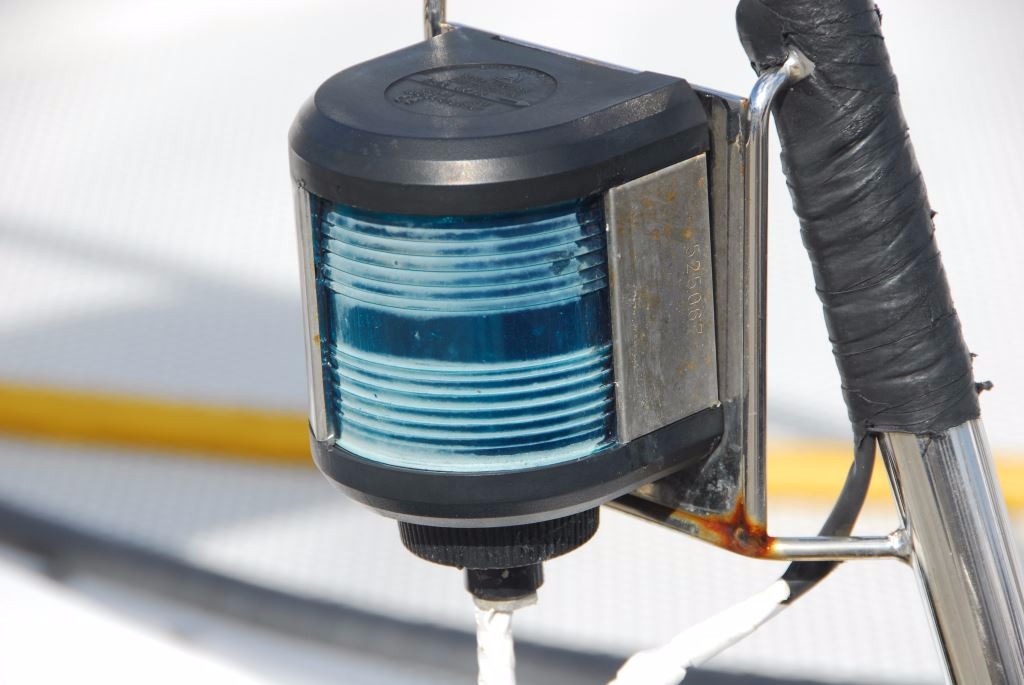Letter from the Editor
As I write this editorial I’m sitting aboard a train bound for Schiedam, in the Netherlands, on my way to visit the folks at Vetus, the well-known Dutch marine equipment manufacturer, about whom I’ll write an article. Yesterday, November 19th, marked the end of this year’s Marine Equipment Trade Show (METS) which is held in Amsterdam each year. METS is it largest show of its kind in the world, covering six sprawling airplane hangar-like halls at Amsterdam’s RAI convention center. If I remain focused, I’m able to cover every aisle of every hall; this year I succeeded, but only by noon on the third day. I’ve attended this show every year for nearly a decade, and this one ranks as the most interesting to date. I attend shows of this sort to remain current on technical trends, and to expand my virtual Rolodex of contacts within the industry, and I measure my productivity by the number of discussions I have with exhibitors, in whose products I have an interest, as well as fellow attendees. With each conversation I get a business card, and this year’s stack is nearly two inches thick, which I’m confident is a record. The marine industry has rebounded after a recession we’d all rather forget. Investment, innovation and creativity are all strong, and that bodes well for both the industry itself, as well as boat owners and buyers. I’ll share some thoughts about specific products in an upcoming column and on my Facebook page.
What concerns me is the growing trend toward conglomeration within the marine industry, a subject I lectured about at a recent breakfast I hosted for SDMC clients. More and more marine businesses are being absorbed by a group of ever growing “mother companies”. While these super-businesses will point out the advantages of economy of scale, and the resulting increased profits, and I have nothing against profit – it’s necessary, from my perspective, when they absorb a company I’ve worked with for years the changes I observe rarely represent an improvement (there are exceptions, read on). Often, the most creative folks leave as they are stifled and hemmed in by more rules, or as a result of their incompatibility with the new corporate culture. Almost invariably responsiveness decreases and it becomes more and more difficult to find folks at the absorbed company who care deeply about the product, or the firm’s image. Personal ‘contact us’ links, that once connected you to an individual on a company’s sales or technical staff, are replaced by generic contact form pages, which generate the dreaded, “we’ve received your comments and will respond within three days” message. In a growing number of cases I never receive any further response. Perhaps most troubling of all, when competing businesses are merged, competition itself, the very lifeblood which sustains virtually every business, is eliminated.
As it happens, one of the exceptions mentioned above is Vetus, the firm I visiting today, which was purchased by Yanmar a few years ago, along with Maxwell, the New Zealand windlass manufacturer (whose facilities I visited earlier this year). It seems the principals at Yanmar, like many Japanese firms, have taken a long-term view of their stewardship of these well-established companies, allowing Vetus and Maxwell to remain independent, and profitable, doing what they do best, design, manufacture, and distribute quality marine products with great customer service. Tellingly, there has been virtually no staff turnover at either of these organizations.
On the bright side, when customer service and support diminishes as a result of conglomeration, it does present an opportunity for smaller competitors to rise to the challenge. While that can be tough, competing with a huge dealer network and supply chain isn’t easy, if the services the smaller independents provide is better and more personalized, they should be rewarded for their efforts. Consider these details when making choices about which products to buy, and as a result which manufacturers you patronize. Reward those that offer the best products, and are the most supportive and attentive to your needs.
Navigation Lights
Text and photo by Steve D’Antonio
Copyright SDMC, Inc. 2015
Too often navigation lights are given short shrift, having been relegated to afterthought status. On far too many vessels I review or inspect, I find navigation lights that are installed incorrectly, blocked by other gear or in poor repair. Make no mistake about it, if your navigation lights are not compliant with the US Coast Guard’s Navigation Rules (and ABYC chapter A-16 Electric Navigation Lights), and you are involved in a nighttime collision, some or all of the blame may be apportioned to you, even if you don’t believe you’ve done anything wrong.
Among other things, navigation lights must meet US Coast Guard requirements for intensity, range and horizontal and vertical sectors, as well as their location. It’s not uncommon to see white all around lights installed on tender outboard cowlings, however, unless that light is one meter above red and green sidelights, and all are wholly unobstructed, they aren’t compliant, which means you are, at the very least, at risk of cited by the Coast Guard or law enforcement, and in the worst case being run down or involved in a collision. Furthermore, many of the navigation light defects I encounter are found aboard new vessels; therefore, don’t assume they are correct regardless of a vessel’s age.
In the accompanying image, the lens of this starboard navigation light is heavily oxidized, which has almost certainly diminished its intensity and range, and possibly its vertical and horizontal sectors. Check you navigation lights, make certain they meet Navigation Rules’ requirements for placement, that they are in good working order, and unobstructed, and lenses are clean and free of defects.



